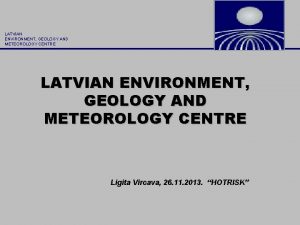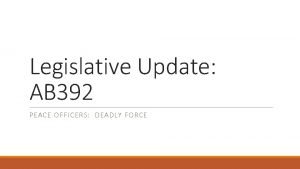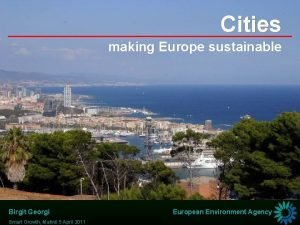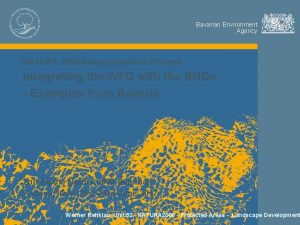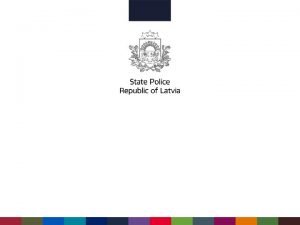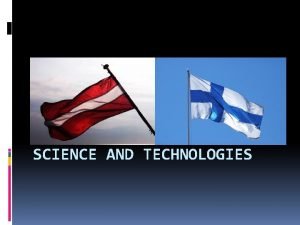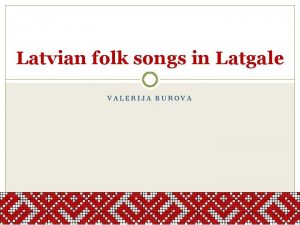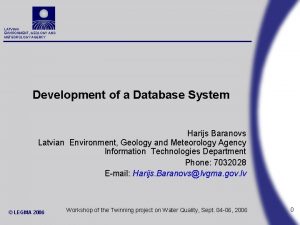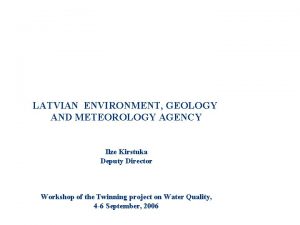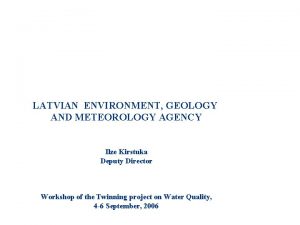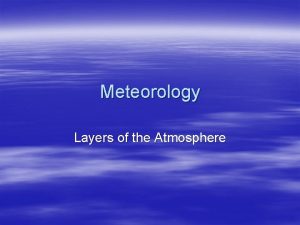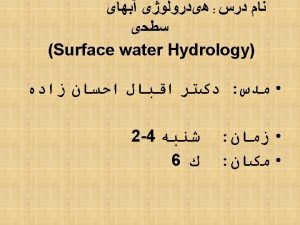LATVIAN ENVIRONMENT GEOLOGY AND METEOROLOGY AGENCY Development of








- Slides: 8

LATVIAN ENVIRONMENT, GEOLOGY AND METEOROLOGY AGENCY Development of a Database System Harijs Baranovs Latvian Environment, Geology and Meteorology Agency Information Technologies Department Phone: 7032028 E-mail: Harijs. Baranovs@lvgma. gov. lv © LEGMA 2006 Workshop of the Twinning project on Water Quality, Sept. 04 -06, 2006 0

LATVIAN ENVIRONMENT, GEOLOGY AND METEOROLOGY AGENCY Status Quo • Lots of existing databases and information systems in environment, geology and meteorology field in relation to water and air • integration of existing and new information systems’ products is very prior task after establishing of LEGMA • “Concept for development of common environment, geology and meteorology information system” adopted in December, 2005 © LEGMA 2006 Workshop of the Twinning project on Water Quality, Sept. 04 -06, 2006 1

LATVIAN ENVIRONMENT, GEOLOGY AND METEOROLOGY AGENCY © LEGMA 2006 Information domens relevant to the project Workshop of the Twinning project on Water Quality, Sept. 04 -06, 2006 2

LATVIAN ENVIRONMENT, GEOLOGY AND METEOROLOGY AGENCY © LEGMA 2006 Overall structure of information processing in LEGMA Workshop of the Twinning project on Water Quality, Sept. 04 -06, 2006 3

LATVIAN ENVIRONMENT, GEOLOGY AND METEOROLOGY AGENCY Developing new information system(s) • Circumstances that must be considered: – to find the place and task in the common IS structure, to detect the relationship with other information systems – to define the output products and the potential users and applications – to ensure quality control and to use standarts for development process (documentation, user manuals) – to guarantee interoperability (bussines, technical and semantic levels) with other information systems © LEGMA 2006 Workshop of the Twinning project on Water Quality, Sept. 04 -06, 2006 4

LATVIAN ENVIRONMENT, GEOLOGY AND METEOROLOGY AGENCY Technical implementation • information should be maintained in one place – the most closly to the place of origin. Other systems should use this information based on different attributes depending on the tasks and goals. • common global classification (coding) system must be used where applicable • all information should be geo-refferenced to be able to apply GIS technologies (data acqusition, modelling, presentation of the results etc. ) • interoperability with de facto standards in LEGMA: Oracle, ESRI Arc/Info or Arc. View. © LEGMA 2006 Workshop of the Twinning project on Water Quality, Sept. 04 -06, 2006 5

LATVIAN ENVIRONMENT, GEOLOGY AND METEOROLOGY AGENCY • • • Common classification River streams and catchments Lakes / reservoirs / ponds (10 ha and larger); Water bodies (temporary); Water abstraction sites; Monitoring sites (temporary); Wastewater outlets; Water supply boreholes; Aquifer; Administrative and territorial units in Latvia; Geographic grid systems (EMEP, etc. ); Contamination substances © LEGMA 2006 Workshop of the Twinning project on Water Quality, Sept. 04 -06, 2006 6

LATVIAN ENVIRONMENT, GEOLOGY AND METEOROLOGY AGENCY Potential applications of GIS in the project • data acquisition from other information systems when data queries are based on spatial relationships • computing of models for grided data sets (layers), cross tabulating different areas, calculation of distance from/to objects and area of objects etc. • the platform for model automatic or semi-automatic computing • presentation of the results in the way of thematic maps • LKS-92 coordinate system (geodetic coordinates) and TKS-93 projection must be used. Common GIS reference data should be used in all project activities. © LEGMA 2006 Workshop of the Twinning project on Water Quality, Sept. 04 -06, 2006 7
